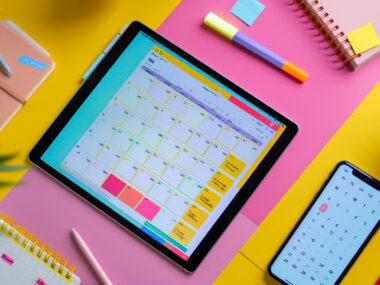Freelancing is more than just a profession preference in the ultra-modern, rapidly changing job market; it’s the primary desire for thousands around the world. Demand for freelancers is at an all-time high as more groups incorporate remote work and project-based initiatives. But a rising reputation also brings with it more intense competition. A resume for a freelancer must be a strategic, customised record that emphasises your expertise, flexibility, and achievements if you want to differentiate yourself, particularly in fields such as technology, design, writing, consulting, or marketing.
Unlike everyday employees, freelancers must continually market themselves to stay competitive. Though a portfolio could be very essential, hiring managers, recruiters, or clients nevertheless rely in particular on your résumé to assess whether you will be the exceptional match for the placement or venture. Writing a contract resume presents specific challenges, including outlining clear obligations, specifying consequences, and demonstrating professionalism.
This post will guide you through the steps to develop a freelancer resume that not only informs but also impresses. You will learn how to emphasize your value, tailor your experiences to different customers, and craft your resume to optimize exposure and response rates.
1. Understand the Purpose of a Freelancer’s Resume
Before you even begin drafting, it is essential to understand what your freelance resume has to accomplish. Unlike traditional resumes that aim to secure a long-term function, your freelancer resume should:
- Establish credibility as a professional contractor.
- Showcase your particular ability sets and mission variety.
- Highlight your capability to deliver outcomes independently.
- Prove your conversation, time management, and customer-coping talents.
- Encourage clients or recruiters to reach out without delay.
Think of your resume now not simply as a static document of your past, but as a dynamic advertising and marketing asset designed to land your next gig.
2. Keep it Clean, Scannable, and ATS-Friendly
Design topics, but clarity comes first. Use clean headings, regular fonts, bullet points, and masses of white space. Avoid overly stylised templates until you are in a visual industry, such as design or branding.

Also, make sure the report is ATS-well suited:
- Save as PDF or .Docx.
- Use widespread fonts (Arial, Calibri, Times New Roman).
- Avoid embedding text in pixels.
- Use bullet points in place of paragraphs for readability.
You can test with a cutting-edge template from a resume maker app to strike the right balance between shape and function.
3. Choose the Right Resume Format for Freelancers
Freelancer resumes generally work first-rate with one of the following formats:
A) Combination Resume
This hybrid format combines functional and chronological patterns, enabling you to highlight key skills and showcase unique projects at a glance. It’s best for freelancers with extensive experience across industries.
B) Functional Resume
Focuses broadly speaking on abilities and know-how, as opposed to recording events. This is suitable when you have more than one short-term gig or professional gaps, although it can lack context for some recruiters.
C) Project-Based Resume
This layout breaks down your resume into personal tasks, listing clients, dreams, and results for each. It’s especially effective in creative or tech industries.
For most freelancers, the mixture of venture-based formats offers first-rate flexibility and readability.
4. Include Testimonials or Brief Client Quotes (Optional)
Client remarks build belief and credibility, specifically in freelancing. If viable, add a phase close to the lowest of your resume with short testimonials:
- “Delivered a top-tier emblem approach under tight time limits. Professional, responsive, and creative.” – Jane D., Marketing Director at XYZ Agency
Keep it concise (1–2 lines) and ensure it highlights a key point.
5. List Relevant Projects or Clients with Impact
Now the most significant section of your freelancer resume—your Project Experience—begins. Here, you focus on the client, the issue you addressed, and the outcomes you achieved, rather than merely listing a business name and job title.
Compose every entry with the following:
- Use “Confidential Client” if NDA-protected or the name of the client or business.
- Project Position: Leading Web Developer, Content Strategist, etc.
- Date range.
- Concise description.
- Outcomes/Influence.
Example:
Client: StartupHub – Remote | Role: UX Designer | Jan 2023–Apr 2023
Improved user onboarding flow using a redesigned mobile app interface. Usability testing was conducted, and adjustments were made that increased the retention rate by 23% within 60 days.
Exhibiting results—such as percentages, revenue growth, and engagement statistics—demonstrates your success and sets you apart.
6. Tailor Your Resume for Each Opportunity
One of the most critical errors freelancers make is sending the same resume to every job or assignment. Customisation is key.
Here’s the way to tailor efficaciously:
- Reorder your tasks to highlight the most applicable studies first.
- Edit your precis to align with the patron’s desires or enterprise.
- Include particular key phrases from the job post.
- Mention the area of interest, equipment, or platforms if they’re part of the consumer’s workflow.
Even minor adjustments can make a significant difference in capturing a client’s interest.
7. Add a Portfolio Link and Professional Contact Info
Unlike a full-time activity seeker, your work speaks louder than your job identity. Always consists of:
- A portfolio link (private website, Behance, GitHub, and many others).
- LinkedIn profile (up to date and aligned with your resume).
- Contact data (expert email and phone number).
This makes it easy for clients to validate your experience and reach out directly. If you’re active on applicable systems like Upwork, Dribbble, or Medium, include them as well.
8. Showcase Your Key Skills and Tools
Use a truly defined skills segment to provide your middle abilities. Break them down into classes for better readability, especially in case you work across disciplines.
Example:
- Design Tools: Adobe Photoshop, Illustrator, InDesign, Figma.
- Web Skills: HTML, CSS, WordPress, Shopify
- Soft Skills: Communication, Project Management, Time Management, Client Relations
Tailor this segment for each function or gig. Many customers search for specific equipment or structures, and including those key phrases in your resume enhances both human and ATS (Applicant Tracking System) visibility.

9. Craft a Strong Summary That Sells
The first segment of your resume ought to encompass a Professional Summary—a concise paragraph that summarises your experience, cost proposition, and core expertise.
Example:
“Creative and outcomes-driven freelance photo clothier with 7 years of experience crafting visible identities, websites, and advertising materials for over one hundred customers across industries. Skilled in Adobe Creative Suite, branding, and UX/UI standards. Adept at dealing with customer relationships and turning in top-notch work on time and within the price range.”
Keep it focused on who you are, what you do satisfactorily, and why a customer should hire you. This picture should make a compelling case in just three to five sentences.
10. Keep Updating and Evolving
Freelancer resumes aren’t “one-and-done” documents. As you take on extra projects, research new tools, and expand your area of interest, continue to refine your resume to reflect your growth.
Make a dependency of updating it every 1–2 months:
- Replace older, much less applicable initiatives with the latest, high-impact ones.
- Update your equipment and certifications.
- Refine your summary to mirror your cutting-edge route or specialisation.
This guarantees you’re usually ready to respond to new opportunities at a second’s notice.
Conclusion: Your Resume is Your Silent Salesperson
In the competitive freelancing market, your resume sells your skills, conveys your value, and persuades customers that you are a good fit for the position, not just tells your story. Creating a resume that is clear, focused, and results-oriented enhances your professional image and significantly increases your chances of being noticed.
Your resume should capture not only what you’ve done but also what you could bring to market, whether you are a writer managing several jobs, a developer searching for fresh customers, or a marketer compiling a portfolio of specialised campaigns. Adjust it, clean it, and let it develop with your professional path.
With the right approach and some assistance from tools like a resume builder app, you can create a freelancer resume that opens doors and fosters long-lasting professional relationships.




